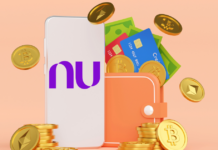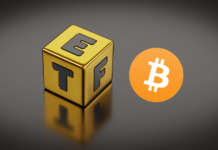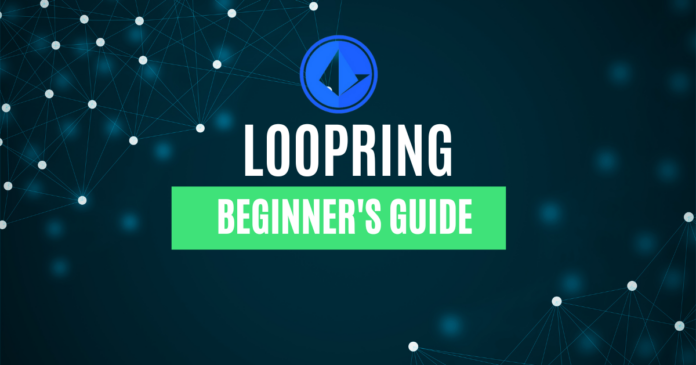High transaction fees and congestion still exist on the Ethereum blockchain. This is where layer 2 chains like Loopring (LRC) comes in.
So, Loopring operates a layer 2 technology that improves Ethereum’s scalability without affecting the protocol’s security. This article will provide a simple guide to the Loopring protocol for those interested in the project but with little knowledge of it.
What is Loopring?
Loopring is an application made to run on top of Ethereum’s blockchain. So, by processing portions of Ethereum transactions on its own network, Loopring attempts to make the process of using Ethereum faster.
Daniel Wang, a former Google software engineer, founded Loopring to speed up and reduce the cost of payments and asset trading on Ethereum without compromising security. Loopring can allegedly reach a throughput of 2,025 transactions per second. In addition, transactions on Loopring cost less than a cent, in contrast to Ethereum’s exorbitant costs.
Loopring offers several services. It is also an Ethereum-based platform for creating order book-based, non-custodial decentralized exchanges (DEX). The protocol routes and executes trades, pairing buyers and sellers at a market price without requiring ownership of the buyers’ or sellers’ money. Loopring functions differently from centralized exchanges, where users must deposit funds with the exchange before it can conduct trades on their behalf.
What Makes Loopring Unique?
The Loopring Protocol uses zero-knowledge proofs to achieve its high throughput and cheap fees. Zero-knowledge proofs are encryption methods that let one party convince another that a statement is true without disclosing any details of the statement itself.
Although zk-rollups are the technology behind Loopring, it is how the protocol implements them that makes Loopring effective. Loopring uses a feature known as OCDA that enables considerably quicker transactions in times when data is available to be moved off-chain for computation.
As demand for block space increases over time, gas prices will continue to rise – it's great for validators, but not great for users wanting to transact👎
You're going to want to get on Ethereum's highly optimized L2 rollup💙
☑️same Ethereum security
☑️fraction of the costs pic.twitter.com/2InazdH1qZ— Loopring💙 (@loopringorg) May 10, 2023
Furthermore, this Layer 2 chain also makes use of a high-throughput arbitrage system that leverages a network of order rings, order miners, and order sharing to ensure fast, internet-scale liquidity.
What is LRC?
Loopring’s native token is LRC, an ERC-20 token. The token holders qualify for Loopring’s VIP program and liquidity mining, as well as participation in its governance. LRC is used to pay fees and ensure the protocol’s security. You can buy LRC on its Exchange as well as on all major DEXs and centralized exchanges.
Not all crypto wallets are the same. There are many Ethereum wallets, but w/ very different security profiles👇
☑️MetaMask 🟰 EOA wallet
☑️Ledger 🟰 Hardware wallet
✅Loopring Wallet 🟰 Smart wallet w/ social recoveryDYOR + understand the differences👇https://t.co/Dm18wAkBBj pic.twitter.com/AGLf1b1xH1
— Loopring💙 (@loopringorg) April 18, 2023
First, you have to create an account on these exchanges. Then, buy LRC using payment methods like credit or debit cards. If you choose to use Bybit, you will need to buy USDT and then trade it for LRC in the Spot Markets section because you can’t buy LRC directly on Bybit.
At the time of writing this article, LRC trades at $0.2913. It has a 24-hour trading volume of $14.8 million. LRC has a circulating supply of 1,2 billion LRC coins and a maximum supply of 1,3 billion LRC coins.
How to stake LRC
Staking is one way to earn rewards by locking up your LRC. You can stake via the web app or the Loopring Wallet. You only have to enter the amount of LRC to stake and begin earning rewards.
Less than a month in + already over 67 Million $LRC staked💙
Come get your non-inflationary staking rewards directly on Loopring L2👇
✅https://t.co/ubzc7xGxdS
✅https://t.co/IMx5kMUYG0 pic.twitter.com/jCif1aJ4lb— Loopring💙 (@loopringorg) April 25, 2023
The LRC staking system allows users to stake or unstake their tokens at any point. However, you have to lock your LRC tokens for 90 days to qualify for staking rewards, after which you can claim your reward. You’ll forfeit your reward if you decide to unstake before the 90-day lockup period expires.
⬆️ For more cryptocurrency news, check out the Altcoin Buzz YouTube channel.
⬆️ Our popular Altcoin Buzz Access group generates tons of alpha for our subscribers. And for a limited time, it’s Free. Click the link and join the conversation today.



























